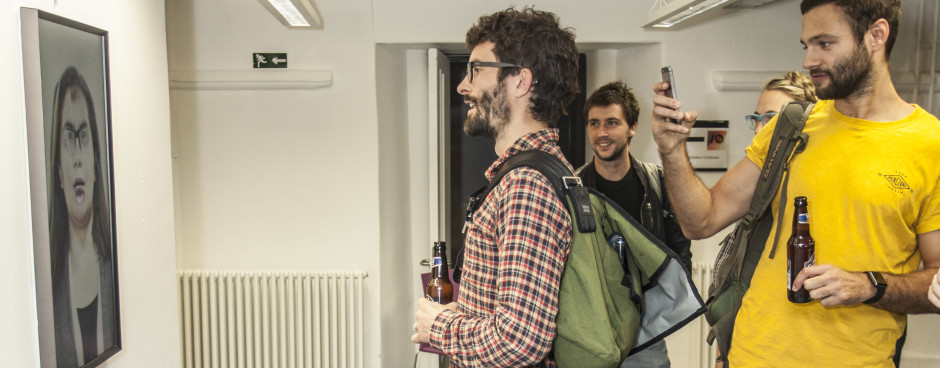MA graduate's face-melding installation teaches you empathy
as it appeared on Wired Magazine
People tend to use idioms when they talk about empathy. Walk a mile in another man’s shoes or see things through her eyes are metaphorical guidelines for transposing your point of view with someone else’s, to better appreciate what they are experiencing.
With that in mind, the idiom that best describes the empathy exercise within Antonio Daniele’s installation This Is Not Private might be see your face in someone else’s face. The artist, a graduate of the MA in Computational Arts, Goldsmiths, who was born in Italy and works in London, prompts viewers to do exactly that: The installation features eight screens, each showing interviews with subjects speaking different languages. Stand in front of a screen and facial recognition software slowly merges your visage with that of the person onscreen, in a swirling, Picasso-like pattern.
“The idea is about making faces communicate with each other,” he says. He designed the software to recognize facial expressions and their related emotions. While you watch, an algorithm uses the characteristics of your face—the distance between your eyes, the shape of your jaw, the size of your nose—to create a ratio between the values. It does the same for the person on screen. Daniele wrote the software so the ratio would correlate to one of six basic facial expressions (anger, fear, sadness, joy, disgust, and surprise.) When you exhibit empathy—which in this case is determined by how closely your expression mirrors that of the person on screen—the image takes on elements of your face. The more empathy you show, the more the two of you become one.
There’s some evidence that this trick can prompt the viewer to empathize with the person on-screen, Jennifer Gutsell, an assistant professor of psychology and neuroscience at Brandeis University. “The more similar you perceive the target subject to be to yourself, the more empathy you feel. That can include physical similarities,” she says. Moreover, mimicking is a form of empathy. “When we react with other people, we tend to simulate their experience with our own body,” she says. This could be as simple as mirroring the smile on a companion’s face, or as subconscious and complex as internalizing someone else’s discomfort. This, combined with our tendency to feel for people who we deem similar, “could trigger a positive feedback loop” of empathy for those who see Daniele’s installation, says Gutsell.
This Is Not Private is by no means seamless—you can see the glitches and stitches on screen, which could cloud a viewer’s perception that the person on screen is indeed kindred. It’s also difficult to conjure empathy on demand, as any number of social scientists and HR departments well know. Still, Daniele says some viewers were too freaked out to keep watching, which suggests he achieved his goal of having viewers “experience some kind of identity displacement, or to come in contact with the actor.”
































































